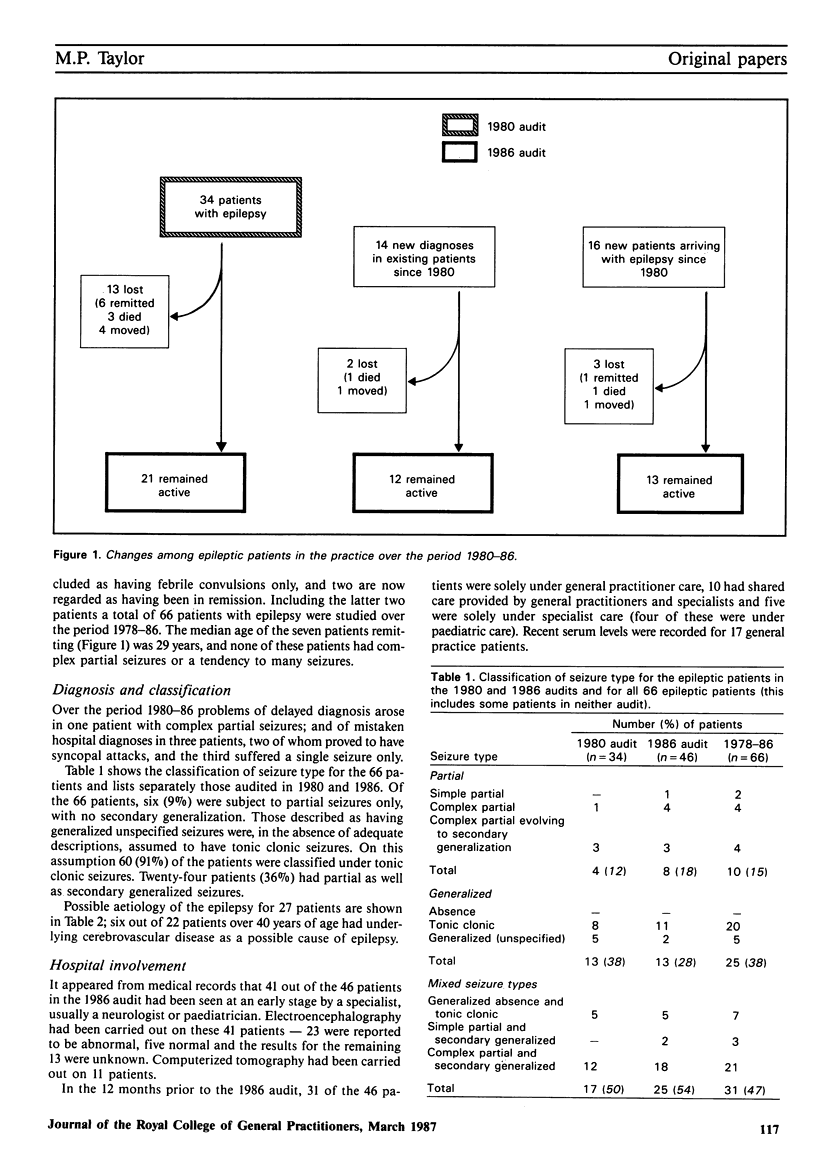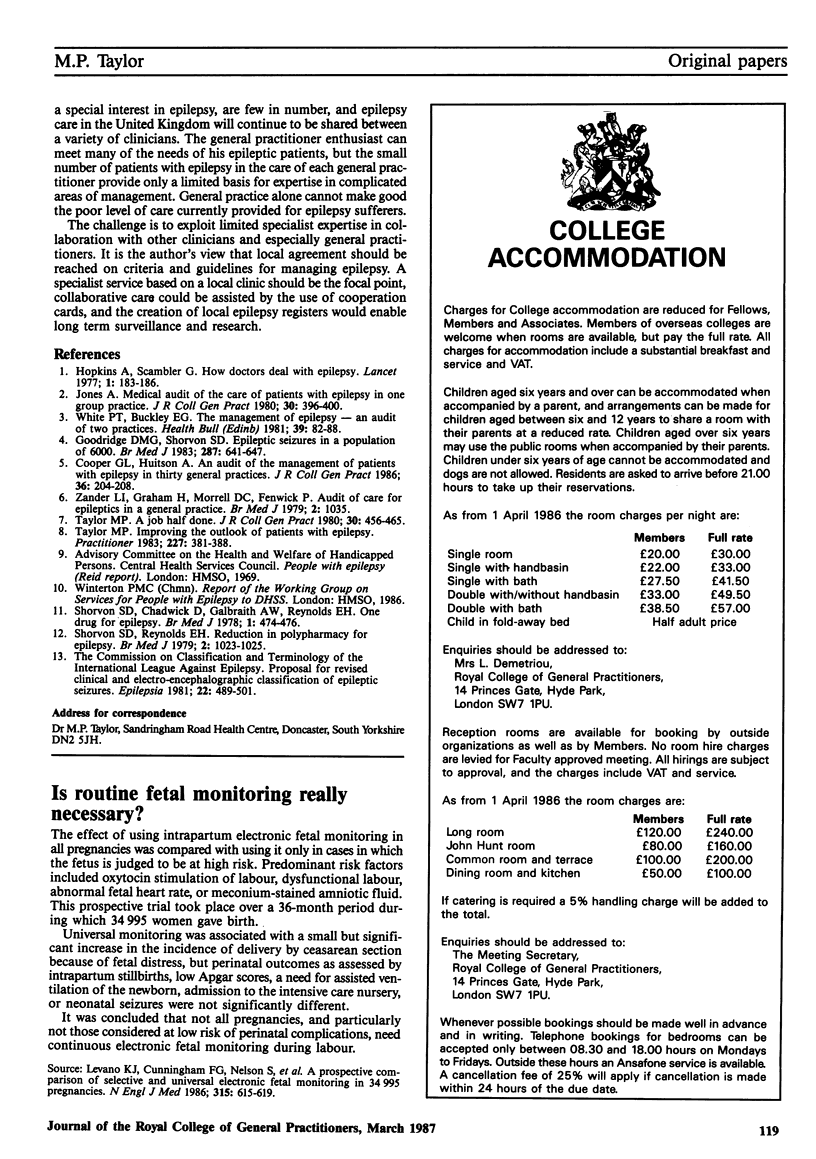Abstract
The results of active management and the findings of repeated audits of epilepsy care over the period 1978-86 in a general practice are described. It was found that about one-fifth of epileptic patients continued to have frequent seizures, usually complex partial, about half had few seizures, and many with mild epilepsy remitted early.
By 1980 attempts to reduce polypharmacy, change treatment and achieve optimal use of anticonvulsant drugs in epileptic patients with frequent seizures or side effects had led to an overall improvement in seizure control in 27%, a reduction of polypharmacy in 24% and an improvement in well-being in many patients. Subsequently it proved possible to maintain this improvement, to achieve similar results in epileptic patients joining the practice and to avoid misdiagnosis and polypharmacy in newly diagnosed patients.
General practitioners can make a considerable contribution to the care of patients with epilepsy but improved overall care requires better collaboration between neurologists and other clinicians. A district epilepsy service, based on a local clinic, which actively pursues a collaborative approach is suggested as the model for providing optimum care to epilepsy patients.
Full text
PDF



Selected References
These references are in PubMed. This may not be the complete list of references from this article.
- Cooper G. L., Huitson A. An audit of the management of patients with epilepsy in thirty general practices. J R Coll Gen Pract. 1986 May;36(286):204–208. [PMC free article] [PubMed] [Google Scholar]
- Goodridge D. M., Shorvon S. D. Epileptic seizures in a population of 6000. II: Treatment and prognosis. Br Med J (Clin Res Ed) 1983 Sep 3;287(6393):645–647. doi: 10.1136/bmj.287.6393.645. [DOI] [PMC free article] [PubMed] [Google Scholar]
- Hopkins A., Scambler G. How doctors deal with epilepsy. Lancet. 1977 Jan 22;1(8004):183–186. doi: 10.1016/s0140-6736(77)91777-9. [DOI] [PubMed] [Google Scholar]
- Jones A. L. Medical audit of the care of patients with epilepsy in one group practice. J R Coll Gen Pract. 1980 Jul;30(216):396–400. [PMC free article] [PubMed] [Google Scholar]
- Shorvon S. D., Chadwick D., Galbraith A. W., Reynolds E. H. One drug for epilepsy. Br Med J. 1978 Feb 25;1(6111):474–476. doi: 10.1136/bmj.1.6111.474. [DOI] [PMC free article] [PubMed] [Google Scholar]
- Shorvon S. D., Reynolds E. H. Reduction in polypharmacy for epilepsy. Br Med J. 1979 Oct 27;2(6197):1023–1025. doi: 10.1136/bmj.2.6197.1023. [DOI] [PMC free article] [PubMed] [Google Scholar]
- Taylor M. P. Improving the outlook for patients with epilepsy. Practitioner. 1983 Mar;227(1377):381–388. [PubMed] [Google Scholar]
- Taylor M. P. William Pickles Lecture. A job half done. J R Coll Gen Pract. 1980 Aug;30(217):456–465. [PMC free article] [PubMed] [Google Scholar]
- White P. T., Buckley E. G. The management of epilepsy-an audit of two practices. Health Bull (Edinb) 1981 Mar;39(2):82–88. [PubMed] [Google Scholar]
- Zander L. I., Graham H., Morrell D. C., Fenwick P. Audit of care for epileptics in a general practice. Br Med J. 1979 Oct 27;2(6197):1035–1035. doi: 10.1136/bmj.2.6197.1035. [DOI] [PMC free article] [PubMed] [Google Scholar]


